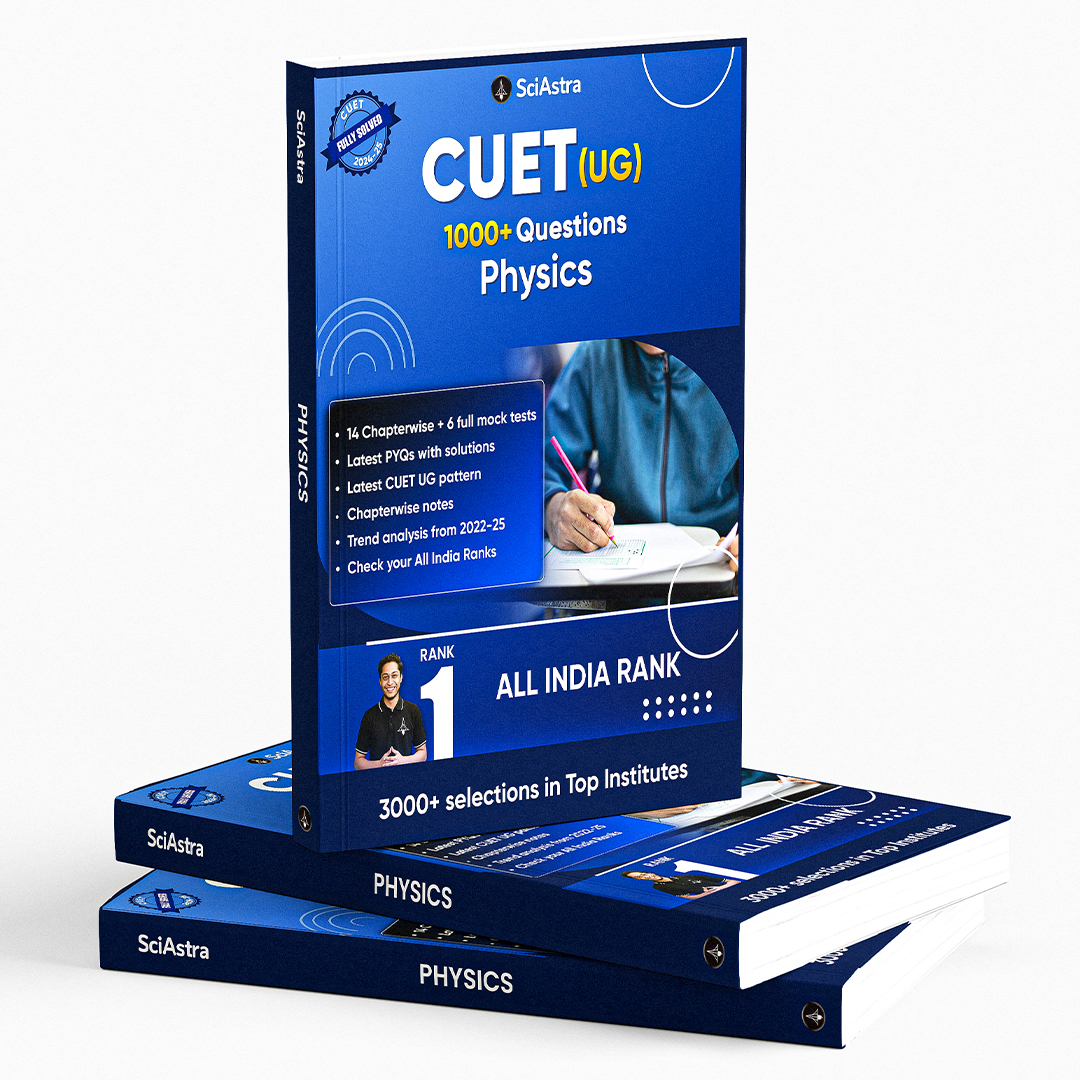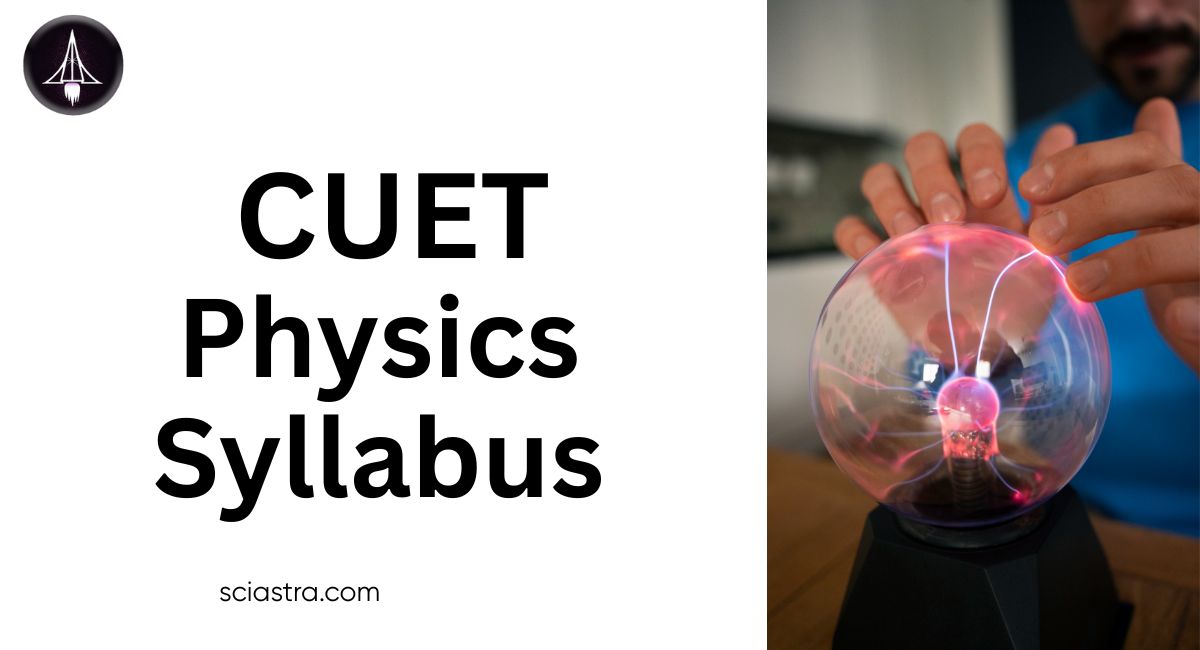The CUET Physics Syllabus 2026 will be released by the exam conducting authority, NTA, after the official exam notification is published. It is widely anticipated that the CUET 2026 Physics syllabus will be announced in the first week of March 2026.Candidates who have passed their Class 12 examination in the Science stream and wish to pursue B.Sc. / B.Sc. (Hons.) in Physics must thoroughly prepare according to the syllabus to secure admission to CUET 2026 participating universities. To appear for the exam, candidates must fill out the CUET 2026 application form, provided they meet the eligibility criteria.The CUET UG 2026 Physics syllabus will help candidates understand the topics covered in the exam, the depth of each topic, and the overall exam pattern.Check out this SciAstra article to learn more about the CUET 2026 syllabus, exam pattern, recommended books, and preparation tips.
Latest Updates:
CUET Physics Syllabus 2026: Highlights
Candidates preparing for the CUET exam, can go through the overview of the CUET Physics syllabus. This will help you understand the exam and other key details that are helpful for preparation.
Features | Details |
Exam Conducting Authority | National Testing Agency (NTA) |
Mode of Examination | Computer-Based Test (CBT) |
Frequency of the examination | Once a Year |
Syllabus Download Website | Yet to be released |
Medium of the examination | 13 languages: English, Hindi, Assamese, Bengali, Gujarati, Kannada, Malayalam, Marathi, Odia, Punjabi, Tamil, Telugu, and Urdu |
Type of Questions | Multiple Choice Questions (MCQs of Physics Domain) |
Total Questions | 50 (all compulsory) |
Exam Duration | 60 minutes |
Total Marks per Subject | 250 |
Marking Scheme | +5 for each correct answer; -1 for each incorrect answer |
Mapping for Courses | BSc/ BSc Hons Physics |
Also Read: CUET 2026 Exam Dates
CUET 2026 Physics Syllabus
CUET Physics Syllabus 2026 comprises the topic and chapter which are included in Class 12 NCERT book. Also, candidates can check out the CUET UG 2026 Physics syllabus mentioned by the exam officials on the official website, ie., cuet.nta.nic.in. Check out the complete list of topics included in the syllabus from here:
Unit | Topics |
Electrostatics |
|
Current Electricity |
|
Magnetic Effects of Current and Magnetism |
|
Electromagnetic Induction and Alternating Current |
|
Electromagnetic Waves |
|
Optics |
|
Dual Nature of Matter and Radiation |
|
Atoms and Nuclei |
|
Electronic Devices |
|
CUET Physics Syllabus 2026 PDF
CUET 2026 notification has not been released yet by the exam officials, therefore CUET UG Physics syllabus pdf is not available to download for the session 2026-2027. However, candidates can check out the CUET Physics 2025 syllabus pdf from below:
CUET Physics Syllabus PDF |
CUET 2026 Physics Book: Mock Test for Preparation
To ace the exam, candidates must thoroughly go through the Class 12 NCERT syllabus prescribed by NTA for the CUET 2026 syllabus. However, merely studying the syllabus will not be sufficient for candidates to secure admission to their desired CUET 2026 participating universities.
In the CUET 2026 exam, the officials will assess candidates' domain knowledge, as well as their critical and analytical understanding of the topics mentioned in the syllabus. To provide academic support to candidates, SciAstra has launched the CUET 2026 Physics Mock Test Book, which includes:
Latest PYQs with solutions
14 chapter-wise tests + 6 full mock tests
Chapter-wise notes
Topic-wise trend analysis from 2022–2025
Check your All India Rank
Latest CUET UG exam pattern

CUET Physics Exam Pattern 2026
While preparing for the CUET Physics 2026 exam, candidates must go through the exam pattern. This will help the candidates in understanding the types of questions asked, medium of the question paper, duration of the examination and other basic details. Check out the CUET 2026 Physics exam pattern from below:
Section | Number of Questions | Duration | Question Types |
Section II – Domain (Physics) | 50 Questions | 60 minutes | MCQs based on Class 12 NCERT syllabus. Input text may be provided for certain questions. |
CUET 2026 Negative Marking Scheme
Check out the CUET UG 2026 marking scheme from here:
For every right answer marked by the candidate in the exam, +5 marks will be awarded to the candidate.
For every incorrect answer marked by the candidates in the examination, -1 mark will be deducted from the candidate.
If the candidate has not answered any question or marked it as the “Unanswered/ Marked for Review”, no marks will be deducted.
If more than one correct answer is found by the exam officials in the question paper, +5 marks will be awarded for the candidates who have marked any of the options of the particular question
CUET Subject Wise Syllabus and Question Paper PDF
Candidates can check out the CUET Syllabus 2026 and CUET UG Previous Year Question Papers of Language Paper, CUET Domain Subjects and General Test from here:
Subject Name | CUET Syllabus PDF | CUET Question Paper PDF |
Section I (Language) | ||
English | ||
Hindi | ||
Section II (Domain Subjects) | ||
Accountancy | ||
Agriculture | ||
Anthropology | ||
Biology/Biological Science/Biotechnology/Biochemistry | ||
Business Studies | ||
Chemistry | ||
Environmental Science | ||
Computer Science | ||
Economics | ||
Fine Arts | ||
Geography | ||
History | ||
Home Science | ||
Knowledge Tradition Practices in India | ||
Mass Media/ Mass Communication | ||
Mathematics | ||
Performing Arts | ||
Physical Education | ||
Physics | ||
Political Science | ||
Psychology | ||
Sanskrit | ||
Sociology | ||
Section III (General Aptitude Test) | ||
General Aptitude Test | ||
CUET Physics Books for Preparation
Before starting the CUET Physics 2026 preparation, candidates must sort out the study materials required by them to ace the examination. There is no signal book which will cover all the aspects like topics of the syllabus, detailed explanation, solutions to the problems, PYQs and mock test series.Therefore it becomes mandatory for the candidates to know about the best books which are required for the preparation. Here is a list of recommended books for a comprehensive CUET 2026 preparation:
Book Title | Author / Publisher | Why It’s Useful for CUET Physics Preparation |
NCERT Physics Textbooks (Class 12) | NCERT | This is the foundational source. CUET questions are largely based on NCERT theory, and clarity in concepts comes from NCERT. |
NCERT Exemplar Problems‑Solutions (Physics) | NCERT | Contains higher order & tricky problems. Helps in sharpening reasoning and problem-solving beyond the routine NCERT textbook. |
Concepts of Physics | H. C. Verma | Very good for concept clarity and numericals. Many CUET aspirants find Verma helpful particularly for mechanics, electricity & magnetism. |
Understanding Physics | D. C. Pandey | Topicwise & structured with many MCQs, which are very similar to CUET-style questions. Helps in practising a lot. |
Oswaal NTA CUET (UG) Chapterwise Question Bank Physics | Oswaal Editorial Board | Specifically tailored for CUET. It gives chapterwise CUET‑relevant questions & past year‑type questions. |
Preparation Tips for CUET Physics Exam
Physics, being one of the most selected subjects for science, makes the exam highly competitive. To meet the CUET cut off 2026 for the physics exam, one needs to have a strategic preparation. Check out some CUET 2026 preparation tips from here:
Start With NCERT: Candidates are required to study Class 12 Physics textbooks line-by-line. Try to understand the definitions, diagrams, and solved examples. Often questions in the exam are asked in such a way to test your understanding of NCERT language.
Build Strong Concepts: Try not to mug up the topics, it is advisable to understand the concept thoroughly. Check out the reference books for deeper clarity.
Practice Chapterwise MCQs: After completing the chapter, candidates can practice the MCQ questions of the topics from any of the reference/resource material out there in the market. This will help the candidates to strengthen their topics.
Create a Structured Study Plan: In order to crack the CUET 2026 Physics exam and get the desired university one needs to devote at least 2‑3 hours daily to Physics, with regular slots for revision to prevent forgetting earlier topics. Also candidates need to allocate more time to high‑weight and weak topics.
Break your plan into phases: learning → practice → revision.
Make Quick Revision Notes: Prepare a formula sheet for each chapter. Include units, dimensions, and exceptions. Keep this sheet handy for daily quick reviews. Bonus: Make flashcards or mind maps to link related concepts.
Work on Your Weak Areas: Once you attend any mock test, try to analyze your mistakes. If you're weak in a chapter (e.g., Capacitors), revisit the theory + do 30 fresh MCQs.
Read More: CUET Subject Mapping 2026

Leave a comment